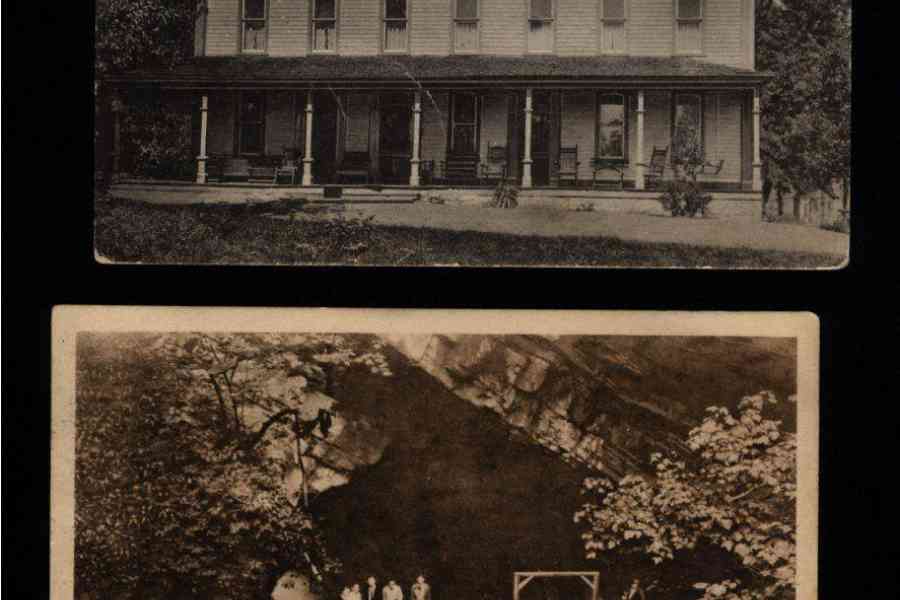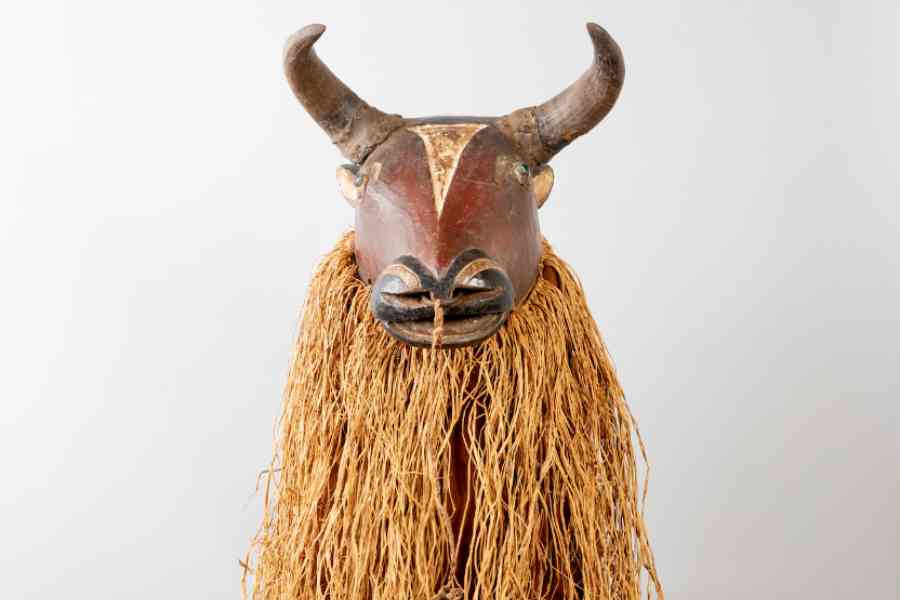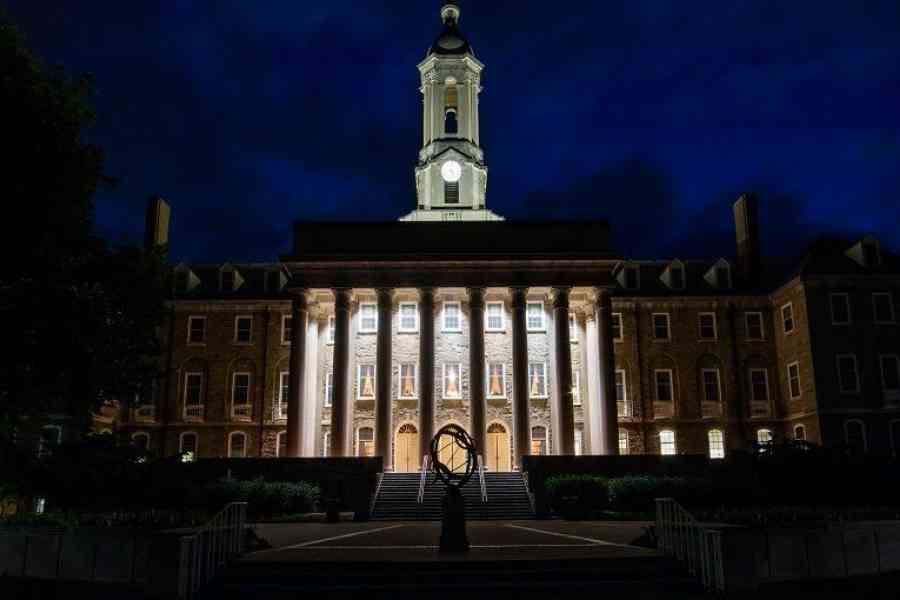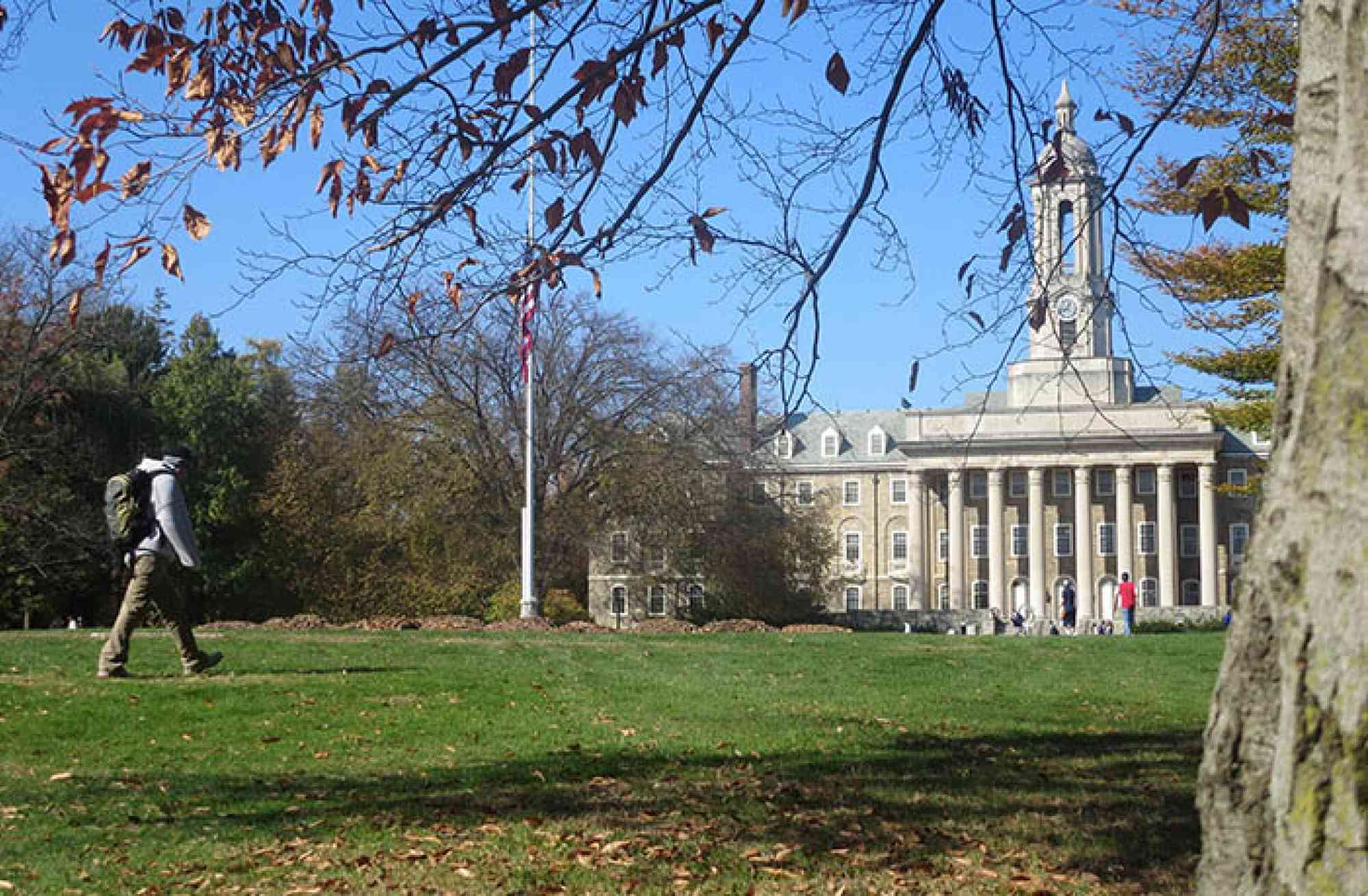
15 Historic Places to Visit at Penn State University Park
Get a sense of Penn State's rich history with this guide to 15 historic structures. Each one has a unique tale to tell about the founding of Penn State.
Get a sense of Penn State's rich history with this guide to 15 historic structures. Each one has a unique tale to tell about the founding of Penn State.

University House
We start our quick tour at the oldest building on campus, University House. Originally known as the President’s House, it was built in 1864 and is the oldest building on campus in its original state. Built for Penn State’s first President, Evan Pugh, it was not completed until after his death in 1864. The house would be the home to Penn State Presidents until 1970. At that point, it would become a “show house” for visiting dignitaries and be renamed University House. In 2001, the home would become part of the Hintz Family Alumni Center Complex.
The Obelisk
A short walk up the mall is the Obelisk, originally known as the Polylith. It was built in 1896 by Michael Womer, a State College resident, and is the oldest landmark at the school. Made of more than 280 blocks of stone, the stones are all from Pennsylvania and arranged in geologic order.
Carnegie Building
The Obelisk is located slightly south of the Willard Building. If you go north past the Willard Building and cross the street, you will be at the Carnegie Building. The building is currently the home of the Donald P. Bellisario College of Communications, but when it was built in 1904, it was the school’s library. The original library was inside of Old Main, but with the expansion of books, and a hefty donation from Andrew Carnegie (reports of either $100,000 or $150,000 exist) the Carnegie Library was built. It would stay a library until 1941 when Pattee Library was opened. Carnegie Hall (which is what the building was known as for a short while) would house some music offices and classrooms. In fact, the legendary Blue Band owes a debt to Andrew Carnegie. He donated $800 so the newly created Cadet Band (precursor of the Blue Band) could buy instruments in 1900.
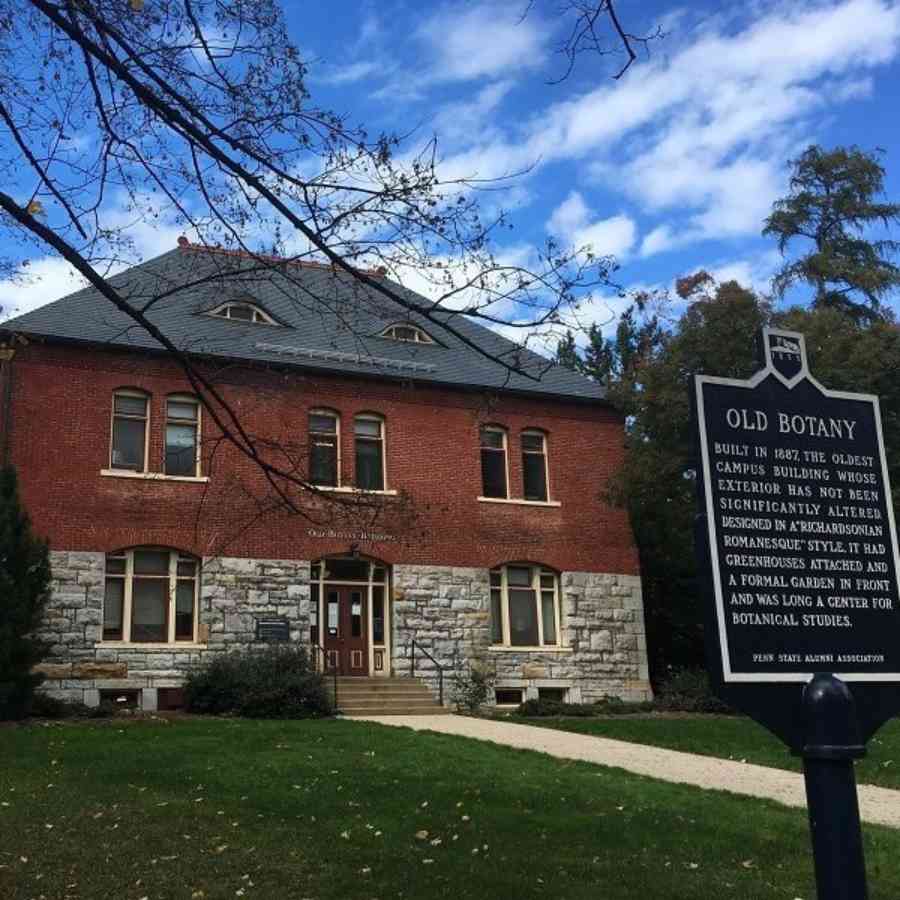
Botany Building
Across the mall from the Carnegie Building is the oldest building on campus still used for class, the Botany Building. Built in 1888, it used to have a botanical garden to the front and side. The building currently houses the Department of Asian Studies. Some say the building is haunted, and late at night, through one of the attic windows, you can see a ghost of a female figure.
Atherton’s Grave
So, who is that spectral woman in the attic of the Botany Building? It’s none other than the ghost of Frances Atherton, who is looking over the grave of her husband across the street.
The grave of George Washington Atherton is located on the side of Schwab Auditorium. Atherton was president of Penn State from 1882 until his passing in 1906. Atherton was the seventh president of the then-known as Penn State College, and he was quite popular. He is the only Penn State President to be buried on campus.
Old Main
Behind Schwab Auditorium is Old Main, though this is not the original Old Main.
The first Old Main was known as the College Building, and it was the only structure on campus when it opened for students in 1859. Penn State was founded in 1855, but the first class of students did not graduate until 1861.
The building housed everything: dorms, library, cafeteria, auditorium, offices, and classrooms.
In 1930, a new Old Main was constructed out of the original limestone of the first building. This new building was much smaller than the original since it was only going to house offices. Inside the building is the Land-Grant Frescos by Henry Vernum Poor. The fresco was painted from the years 1940 to 1949 and visitors can see much of the painting from the lobby. It highlights the founding of Penn State as a land-grant college and some historical figures of Penn State history. Poor also painted murals inside the Department of Justice and Department of Interior buildings in Washington, D.C.
Old Coaly’s Bones
So, who helped build the original Old Main? A mule named Old Coaly.
A little east of Old Main is the Hetzel Union Building (HUB) – Robeson Center. The HUB was opened in 1955 and expanded and renamed the HUB-Robeson Center in 1997. Inside, on the first floor, in the southwest corner of the building, are the bones of Old Coaly.
Old Coaly was Penn State's first unofficial mascot (the Nittany Lion would not be created until 1904). The mule would haul the limestone at the bottom of Old Main lawn up to the site where Old Main was being built. He was so beloved that after Old Main was built, Penn State purchased him and used him on campus for the next 30 years.

Eisenhower Auditorium
A little east and north of the HUB-Robeson Center is Eisenhower Auditorium.
Many believe that Eisenhower Auditorium was named after Dwight D. “Ike” Eisenhower, the 34th President of the United States from 1953 to 1961. However, it is actually named after Milton S. Eisenhower, his brother. Milton was president of Penn State from 1950 to 1956.
The 2,600-seat auditorium was built in 1974 and dedicated to Milton in 1977. The auditorium is not the only building to have the Eisenhower name on campus. More on that later!
Penn State All-Sports Museum
We spent some time in the south-central of Penn State, but now we are going to jump toward the northeast part of campus where Beaver Stadium is.
Beaver Stadium, which is the second largest stadium in America, houses a wonderful historic museum, the Penn State All-Sports Museum.
Founded in 2002, the Penn State All-Sports Museum preserves the legacy of the Nittany Lions’ achievements through 150 years of intercollegiate competition. Located in the southwest corner of Beaver Stadium, the Museum highlights each of Penn State’s varsity sports, past and present, and tells the stories of the thousands of athletes who have been proud to wear the Blue and White. Penn State is more than just football and wrestling.
We Are Statue
The We Are Stute was a gift from the Class of 2013 and was erected on June 30th, 2015.
Located at the corner of Curtin Road and University Drive, it is a short walk or drive from the All-Sports Museum.
The Sculpture was designed by Brooklyn, N.Y., artist and Penn State alumnus Jonathan Cramer and includes a 12-foot, 8,000-pound sculpture of the words "We Are" in mirror-polished, solid stainless steel.
It has become a popular site for photographs, especially during football games.
Palmer Museum of Art and The Arboretum at Penn State
Up the road and toward the northwest of the We Are Statue is the Palmer Museum of Art and the Arboretum. The two are paired together since they are just about in the same location. To get to the Arboretum entrance, you have to walk to the side and behind the art museum.
Penn State has always had an interest in gardening and horticulture. It started with the building of the Botany Building and its surrounding gardens in 1888, it continued with the Penn State Trial Gardens in 1933, which were right next to where East Halls is now, and it concluded with the building of the Arboretum in 2009. The Arboretum was made possible by Penn State alumnus Charles H. “Skip” Smith, who donated $10 million to fund the construction of the H.O. Smith Botanic Gardens in honor of his father. The gardens are just part of the Arboretum, which contains Marsh Meadow, Childhood’s Gate, Children’s Garden, and the Overlook Pavillion.
The Palmer Museum of Art recently opened in its current location in 2024. Previously, it was located toward the center of the college behind Pattee/Paterno Library. It was a good location for students to visit, but there wasn’t any convenient parking for out-of-towners. The new location is across the street from a university parking lot.
The Palmer Museum of Art at Penn State is the largest art museum collection between Pittsburgh and Philadelphia and the most significant academic art museum in Pennsylvania.

Berkey Creamery
Right down Bigler Road from the Arboretum and Art Museum is the Berkey Creamery.
Penn State has always been known for its outstanding ice cream. It isn’t a surprise since the original name of the school was the Farmers’ High School of Pennsylvania.
The original Creamery was founded in 1865 and was located behind Old Main. It wasn’t long before a new building was built to accommodate the additional space needed to produce all types of dairy products.
In 1925, the Creamery started to offer a two-week condensed course on ice cream making. According to Penn State Libraries, by the 1970’s, representatives from almost every major ice cream producer were sent to Penn State to take the course, including members from Baskin-Robbins, Borden, Breyers, Haagen-Dazs, Hershey’s Ice Cream, and Good Humor. Ben Cohen and Jerry Greenfield from Ben & Jerry’s, both took the $5 correspondence course offered by the Creamery. In 1978, soon after completing the course, they began their now-famous ice cream company.
Eisenhower Chapel
Get your walking shoes on because you have a little way to go to get to your next destination. If you leave the Creamery and head due east on Curtin Rd, you will get to Eisenhower Chapel.
Eisenhower Chapel was named after Milton Eisenhower’s wife, Helen Eakin Eisenhower. The chapel was built in 1955 and completed in 1956. It was named in honor of Milton’s wife who had passed away during his tenure as president of the college in 1954. “Ike” Eisenhower laid the cornerstone.
Eisenhower Chapel is now part of the Pasquerilla Spiritual Center, which is the largest multi-faith center of its kind in the country.
Patee and Paterno Library
Almost across the street from Eisenhower Chapel is the Patee-Paterno Library
As stated previously, the Carnegie Building was originally known as the Carnegie Library built in 1904. In 1940, at the end of the Mall (a two-column row of elm trees lining a walkway starting at College Ave) a new library was constructed. The Mall walkway used to be a roadway, but that was closed off in 1924. The new library was named after Professor Fred Lewis Pattee, the first person to have the title of Professor of American Literature in any college world-wide and the author of Penn State’s Alma Mater.
The library would continue to expand and towers as well as the “stacks” would be added to the original library. Due to the fundraising efforts of Joe and Sue Paterno, the east wing of the library was completed and in honor of their efforts, was dedicated as the Paterno Library in 2000.
The complex is now known as the Patee – Paterno Library.
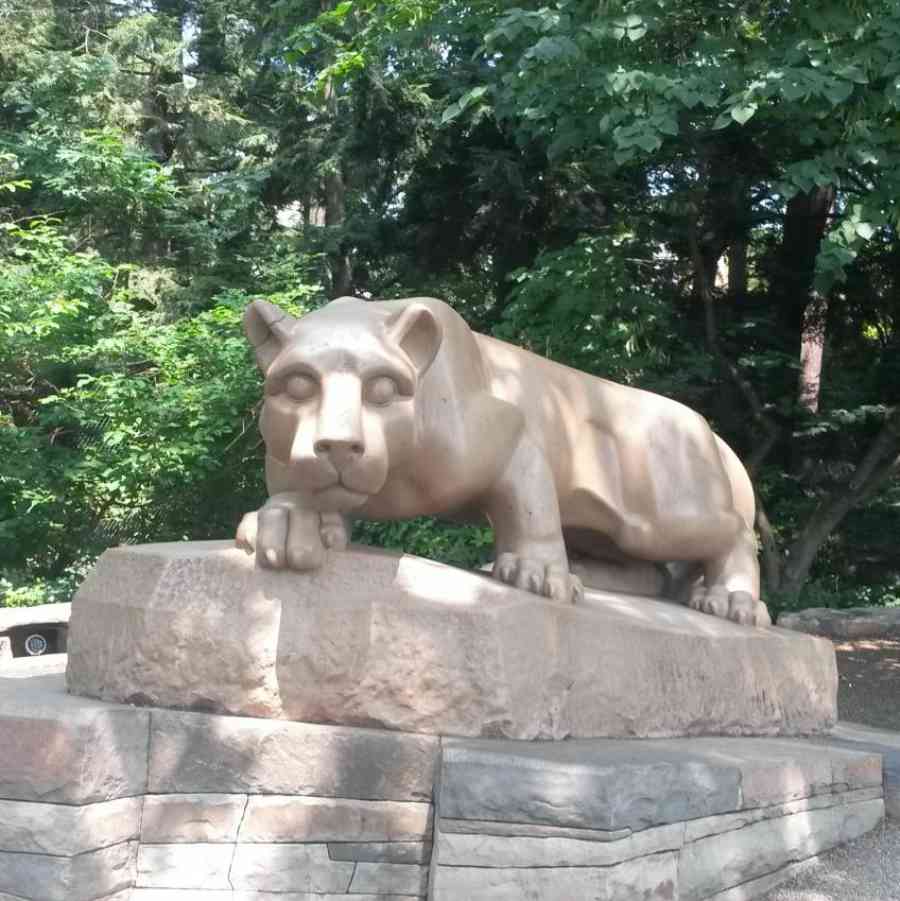
Nittany Lion Shrine
A very short distance from the library on Curtin Rd is the second most photographed landmark in Pennsylvania, the Nittany Lion Shrine.
The shrine was a gift from the Class of 1940 and was completed in 1942 by noted sculptor Heinz Warneke. It was located on the west side of campus near where Beaver Field was and where Rec Hall is now. The west side of campus used to be the sports area of the college, but when Beaver Field was moved to the east and renamed Beaver Stadium in 1960, that area became the sports hub. Soon, the Bryce Jordan Center would be created to house basketball, Medlar Field for baseball and the Pegula Ice Arena for ice hockey, all near each other at the northeast corner of the campus.
The shrine has had same vandalism occur in its long history. Before the tradition of “Guarding the Shrine” was created during every homecoming, rival schools used to try to paint the lion. However, no one ever physically damaged the lion until 1978. An ear was broken off and Warneke was asked back, at age 83, to fix it.
The Lion would lose an ear again in 1994, 2004 and 2018, but fortunately, there is a mold for every section of the lion, so damage can be quickly repaired.
The lion is the most photographed landmark at Penn State, with many a student getting their picture taken on it for graduation and many alumni returning to get a picture of them and their family on it.
What is the most photographed landmark in Pennsylvania, beating out the beloved Nittany Lion? The Liberty Bell in Philadelphia!
Hope you enjoyed your quick and short historic tour of Penn State University Park Campus and you got your steps in. This was only a small smattering of the rich history the campus has to offer!
